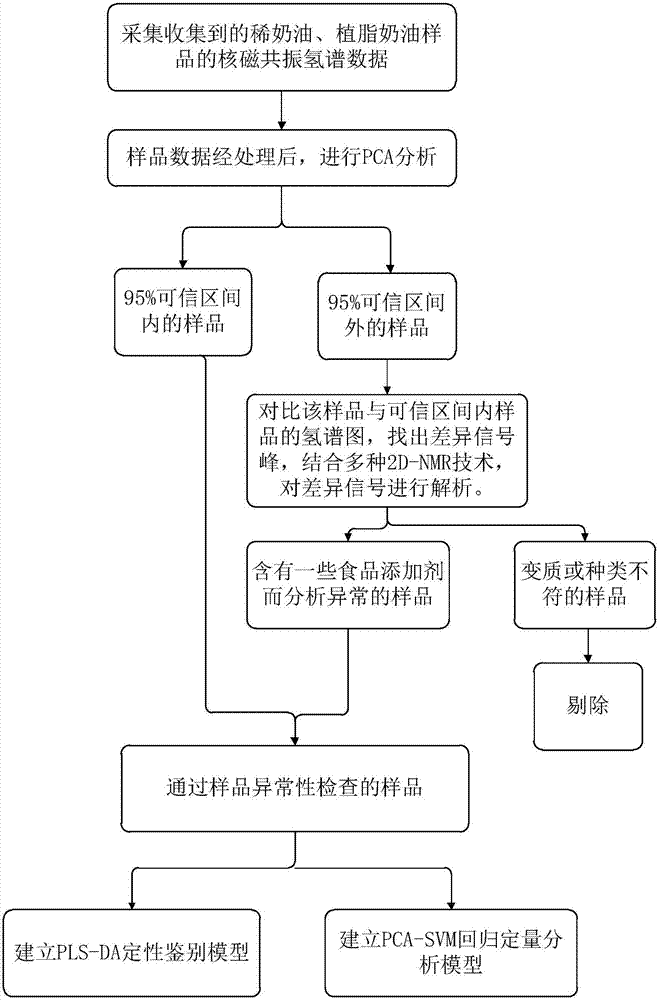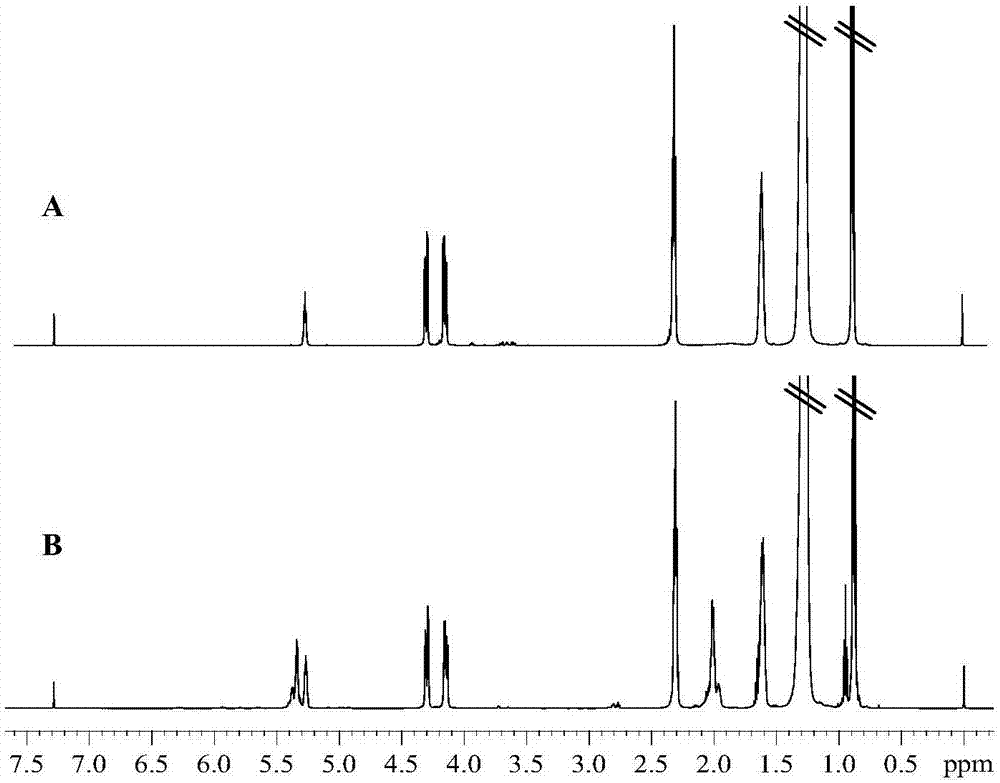Method for performing nuclear magnetic resonance detection on adulterated non-dairy cream in watery cream
A nuclear magnetic resonance and non-dairy cream technology, which is used in the detection/identification of whether non-dairy cream is mixed with non-dairy cream and the content of non-dairy non-dairy cream, detection of non-dairy cream content in non-dairy cream, food quality adulteration identification field, Can solve the problem of non-dairy cream mixed with cream
- Summary
- Abstract
- Description
- Claims
- Application Information
AI Technical Summary
Problems solved by technology
Method used
Image
Examples
Embodiment 1
[0129] The preparation of embodiment 1 adulteration sample
[0130] Qualitative model: according to the gradient of 15%, 20%, 50%, 70%, and 100% of the mass fraction of non-dairy cream, prepare cream samples of adulterated non-dairy cream to obtain experimental samples with different cream contents; There are 6 kinds of cream composition experimental samples, 10 samples for each gradient, a total of 60 samples for use.
[0131] Quantitative model: Prepare mixed cream samples according to the mass fraction from 5%-95% (the interval between each point is 10%) and the adulteration ratio of 0% and 100%.
[0132] Qualitative and quantitative use of mixed cream The sum of the mass of the two creams weighed at each point is 10g, put it into a 15ml plastic bottle, add stainless steel grinding beads with a diameter of about 5mm, seal it with a cover, and put it into a multi-tube vortex Shake in the shaker for 1min to fully mix the two creams in the bottle.
Embodiment 2
[0133] The preparation of embodiment 2 sample solution
[0134] Weigh about 500mg of the cream sample prepared in Example 1 in a 2mL EP tube, add 1mL CDCl 3 , placed in a homogenizer for homogenization for 40s (30Hz), then put into a centrifuge, and centrifuged at 4°C for 10min (8000r / min). Pipette 600 μL of the supernatant obtained after centrifugation into a 5mm NMR tube for testing.
Embodiment 3
[0135] Example 3: Acquisition of Quantitative Model Training Set and Test Set Samples
[0136] Using the randperm function in Matlab, 14 creams were randomly divided into two groups with 7 samples in each group; similarly, 11 non-dairy creams were divided into two groups with 6 samples in one group and 5 samples in one group. Get the first group of 7 samples in the cream and the first group of 6 samples in the non-dairy cream, prepare samples according to the method in the preparation of adulterated samples in Example 1, a total of 213 samples are used as training set (training set) samples; The second group of 7 samples in cream and the second group of 5 samples in non-dairy cream were prepared according to the method in the preparation of adulterated samples in Example 1, and a total of 112 samples were used as testing set samples.
PUM
 Login to View More
Login to View More Abstract
Description
Claims
Application Information
 Login to View More
Login to View More - R&D
- Intellectual Property
- Life Sciences
- Materials
- Tech Scout
- Unparalleled Data Quality
- Higher Quality Content
- 60% Fewer Hallucinations
Browse by: Latest US Patents, China's latest patents, Technical Efficacy Thesaurus, Application Domain, Technology Topic, Popular Technical Reports.
© 2025 PatSnap. All rights reserved.Legal|Privacy policy|Modern Slavery Act Transparency Statement|Sitemap|About US| Contact US: help@patsnap.com



